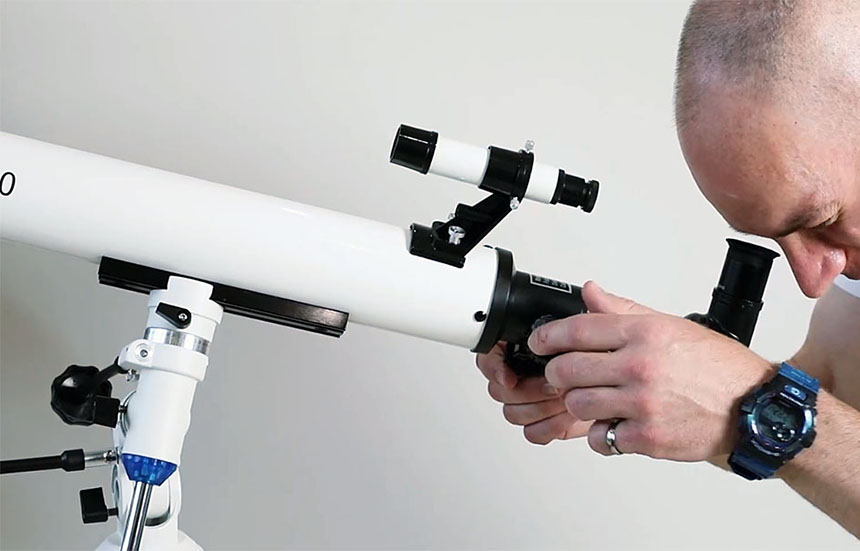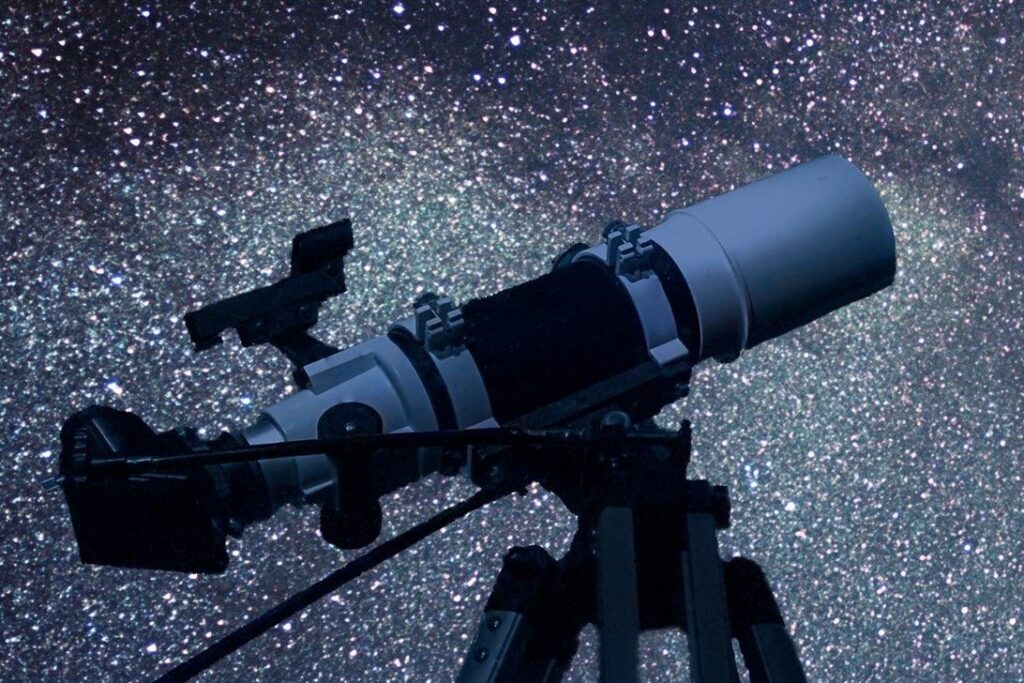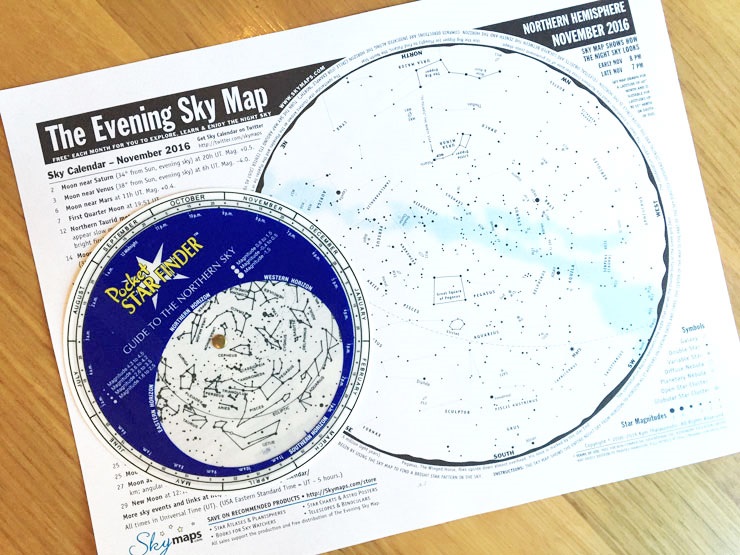Stargazing is a fascinating experience enjoyed by people of all ages. Gazing up at the night sky to catch sight of celestial objects can be done with the naked eye. But, amateur and professional astronomers know that a telescope elevates night sky viewing to a whole new and exciting level. This piece of equipment allows you to see so much more than what the naked eye can perceive.
Using a telescope lets you see the stars, moon, planets, and other magical universal objects with clarity and enhancement. Knowing how to focus telescope components is essential for optimizing the incredible effects of starry nights, transforming your nighttime gazing into a thrilling experience. Keep reading to find out to focus your telescope and watch the galaxy come alive from far away!
This hobby doesn’t have to break the bank. Even some of the best telescopes that you can buy for under $200 will introduce you to the wonderful world of galaxies Trusted Source What Is a Galaxy? | NASA Space Place – NASA Science for Kids A galaxy is a huge collection of gas, dust, and billions of stars and their solar systems, all held together by gravity. spaceplace.nasa.gov . After doing the research and picking the right telescope, you can start your astronomical viewing journeys. The next step is setting it up and focusing it on the best stargazing experience. Fiddling with screws, aligning finders, and adjusting other components of the telescope will eventually get the sharpness and brightness you want when observing celestial objects. Knowing what you want to see with your telescope, plus setting the focus configurations, is key to successful nighttime gazing as you search the galaxy for its beauties!
The telescope is designed to capture the magnitude of objects found in space. From comets to satellites, stars, and the moon, this tool enhances these objects for a better viewing experience. Getting the right focus depends on your intentions for using this piece of equipment. Focus settings need to be adjusted differently for stars, planets, and other celestial objects found in the solar system. Researching the different planets, when they can be seen, and from where you can see them best, determine how you focus your telescope for the finest sightings. A planet guide can be found online, and you can use it to guide you when setting your telescope’s focus.

Once you know what you want to find up above in space, you can start aligning the telescope’s finder. Also known as a pointing device, the finder resembles a small tube located on the side or top of the telescope tube.
The function of the finder is to make it easier to view smaller entities in the night sky, and getting the right setting is key for perfect nighttime viewing.
To align your telescope’s finder, practice with objects such as a building or tower in the distance. Once you have the chosen object in line with the telescope, set the finder towards the object and center it using the crosshairs. Using the screws on the side, align the finder with the object. Tightening the screws will keep the focus configurations in place. Telescope beginners will find it takes time and patience to get the right configurations. Practicing during the day helps to familiarize yourself with the finder as well as the other components of your telescope. Familiarizing yourself with all the features of your telescope will make it easier to align it with celestial objects at nighttime.
It’s recommended to set the telescope’s eyepiece to the lowest magnification, which is the highest number in millimeters. The higher the magnification, the harder it becomes to attain the ideal focus, even on a good night. It’s advisable to avoid going over 50x per inch if you want to get a good focus. To calculate the magnification, you need to divide the telescope’s focal length by its eyepiece measurement. For example, if your astronomical refractor telescope’s focal length is 600 mm and you’re using a 22 mm eyepiece, the magnification will be approximately 22x. The smaller the eyepiece focal length, the greater the magnification, making it easier to spot an object depending on other factors such as cloudy or windy nights.
It’s important to place the crosshairs exactly in the direction of the object you want to study. Setting the magnification and aligning the finder beforehand makes it easier to locate and view the object. The crosshairs must be situated on the object’s center. When focusing on the crosshairs, you want them to be sharp with your eye. The object being viewed must also be sharp. During a nighttime viewing, both the crosshairs and object must remain clear without one or the other blurring. At this point, it’s essential not to knock over or move the telescope as it can cause the settings to be moved out of alignment. A quick tip! Wearing your glasses will help you get the right sharpness of the crosshairs and object when setting the finder.
The eyepiece’s function is to focus and magnify the light for your eyes so you can see night sky objects clearly. It’s important to set the finder before looking into the eyepiece and locating the object. Aligning the finder properly means the eyepiece will be closer to the right setting, as well as saving you the hassles of fiddling too much with the eyepiece focus control. With the finder and telescope in the right place, it will be easier to find the object through the eyepiece. However, if the finder isn’t properly centered on the object, you’ll need to make some adjustments before looking for the object through the eyepiece.
When the object becomes visible through the eyepiece, you can adjust for sharpness and clarity. This is done by adjusting a small dial or knob on the eyepiece tube. Turning the focus control dial changes the eyepiece and lens distance, shortening or lengthening it for better, clearer viewing. Use the telescope’s manual if you’re not sure which knobs to use for focusing the eyepiece. Practice adjusting and focusing the telescope while looking through the eyepiece as much as possible before using it for galaxy watching at night. Getting comfortable with the focusing process means you can make adjustments without looking away from the eyepiece while picking out stars.
While most telescope designs give you decent focus, you may not be satisfied with the resolution. Investing in a more powerful telescope using advanced technology could improve your stargazing experience. So, perhaps it’s worth spending a bit more? Some of the best telescopes under $300 can also enhance your space discovery journey exponentially!
Exploring the night sky is an enthralling, exciting, and fascinating hobby. Having the right telescope makes a world of difference between mediocre and exceptional space discovery explorations from the ground. But, knowing how to focus the telescope is important if you want to observe the different celestial objects found in the solar system while enjoying the experience. Understanding how to use the different components and setting the right magnification goes a long way to getting results whether you’re stargazing, studying the moon, or your favorite planet. Why not take your hobby to another level by investing in a telescope for astrophotography? This way, you can capture your galaxy viewings for life!





